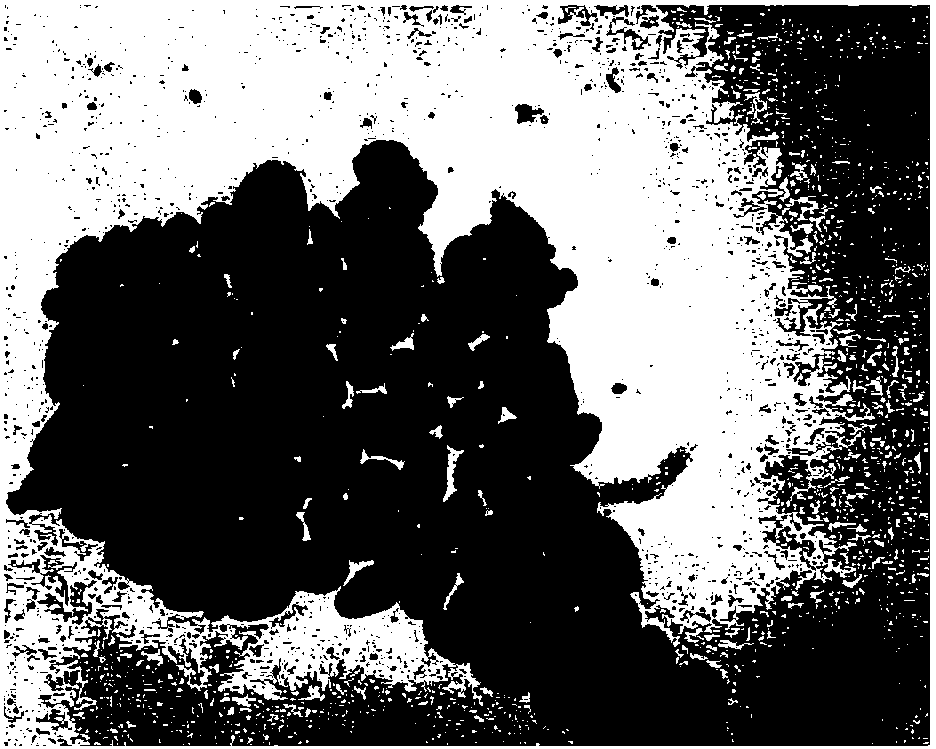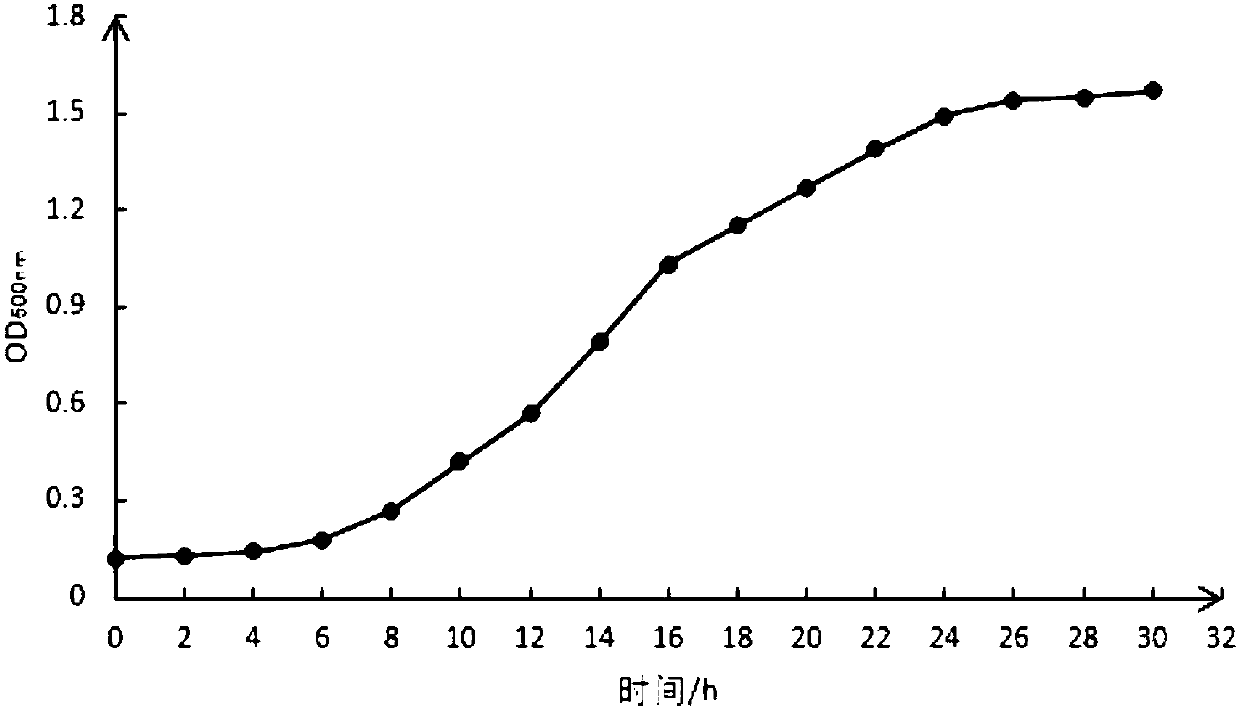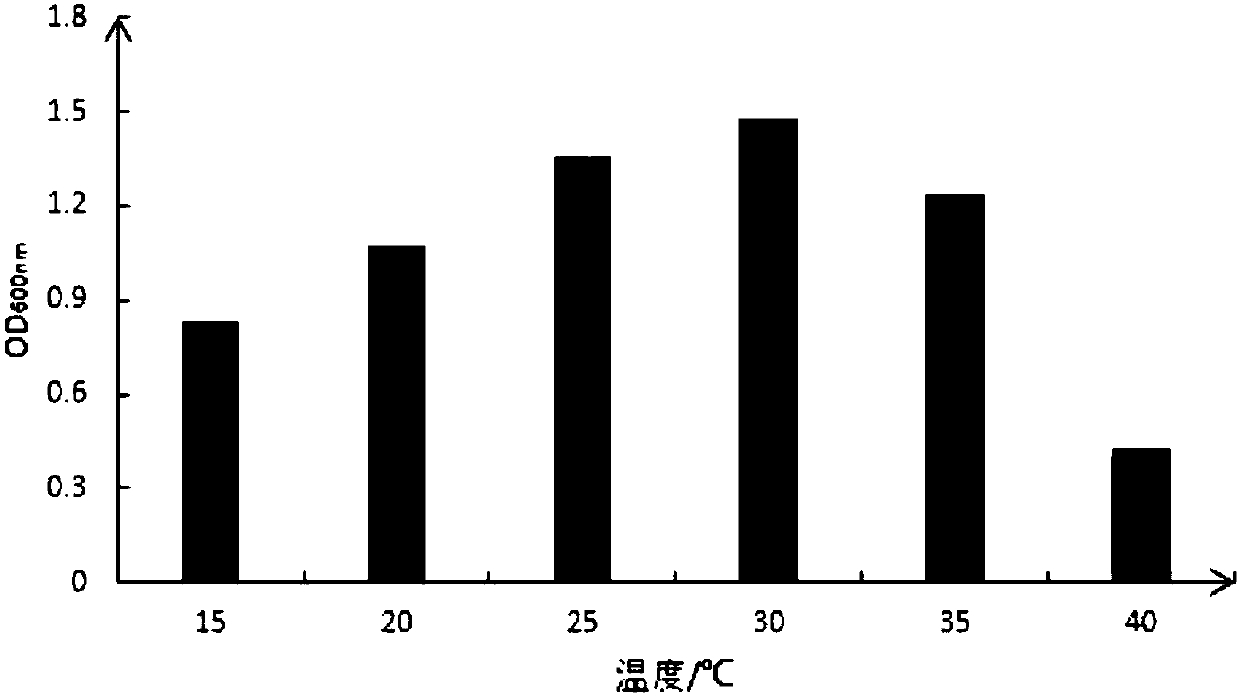Saccharomyces cerevisiae and application of saccharomyces cerevisiae in fruit enzyme product
A technology of Saccharomyces cerevisiae and fruit enzymes, which is applied in the field of microorganisms, can solve the problems of limited application, and achieve the effect of short fermentation time and controllable fermentation process
- Summary
- Abstract
- Description
- Claims
- Application Information
AI Technical Summary
Problems solved by technology
Method used
Image
Examples
Embodiment 1
[0063] A kind of Saccharomyces cerevisiae (Saccharomyces cerevisiae) strain SITCC No.20012 collection, separation, the steps are as follows:
[0064] (1), sample collection
[0065] Samples were taken from naturally fermented fruit and vegetable products, traditional fermented dairy products (milk fans, milk cakes, yogurt, kumiss, etc.), raw milk, dough, kefir grains (Tibetan mushrooms), silage, rice wine grains, etc. Put the collected samples in an ice box to refrigerate, keep them at a lower temperature and bring them back to the laboratory and place them in a refrigerator at 4°C to separate the lactic acid bacteria as soon as possible;
[0066] (2), sample pretreatment
[0067] Take 10g of solid sample (20mL of liquid sample) into a 250mL Erlenmeyer flask (containing glass beads) filled with 90mL of sterile water, shake and let stand for 20min, and set aside.
[0068] (3) Preliminary isolation of yeast with high DPPH free radical scavenging ability
[0069] Use sterile w...
Embodiment 2
[0082] The bacterial strain SITCC No.20012 of embodiment 1 is carried out microbiological identification
[0083] (1), colony characteristics:
[0084] The strains were isolated by streaking on a PDA plate, cultured anaerobically at 30°C for 48-72 hours, and the strains grew well. The colony characteristics of most yeasts are similar to those of bacteria, but larger and thicker than bacterial colonies. mostly milky white;
[0085] (2), characteristics of bacteria:
[0086] The bacteria strain SITCC No.20012 is spherical or oval, see figure 1 As shown, they are much larger than single-celled individuals of bacteria, generally 5–10 μm in diameter;
[0087] (3), training characteristics:
[0088] Strain SITCC No.20012 has the best growth temperature at 25-34°C; the highest and lowest initial growth pHs are 8.0 and 3.0, and the optimum growth initial pH is 4.0; the strain SITCC No.20012 enters the logarithmic growth phase at 6h and reaches a stable state at 26h Expect;
[0...
Embodiment 3
[0095] Growth Characteristics of Saccharomyces cerevisiae SITCC No.20012
[0096] (1), Saccharomyces cerevisiae (Saccharomyces cerevisiae) SITCC No.20012 growth curve drawing
[0097] Put the activated Saccharomyces cerevisiae SITCC No.20012 into the MEB liquid medium according to the inoculation amount of 2% (v / v), culture at 30°C for 30h, and measure the OD of the culture medium at 600nm every 1-2h Value, obtain the growth curve of Saccharomyces cerevisiae (Saccharomyces cerevisiae) SITCC No.20012 in MEB liquid medium by plotting time with OD value, the result is as follows figure 2 shown, from figure 2 It can be seen from the figure that Saccharomyces cerevisiae SITCC No.20012 enters the logarithmic phase at about 6h in the MEB liquid medium, and enters the stationary phase at about 26h.
[0098] (2) Determination of optimum growth temperature of Saccharomyces cerevisiae SITCC No.20012
[0099] Inoculate the activated Saccharomyces cerevisiae SITCC No.20012 into 10mL M...
PUM
 Login to View More
Login to View More Abstract
Description
Claims
Application Information
 Login to View More
Login to View More - R&D
- Intellectual Property
- Life Sciences
- Materials
- Tech Scout
- Unparalleled Data Quality
- Higher Quality Content
- 60% Fewer Hallucinations
Browse by: Latest US Patents, China's latest patents, Technical Efficacy Thesaurus, Application Domain, Technology Topic, Popular Technical Reports.
© 2025 PatSnap. All rights reserved.Legal|Privacy policy|Modern Slavery Act Transparency Statement|Sitemap|About US| Contact US: help@patsnap.com



